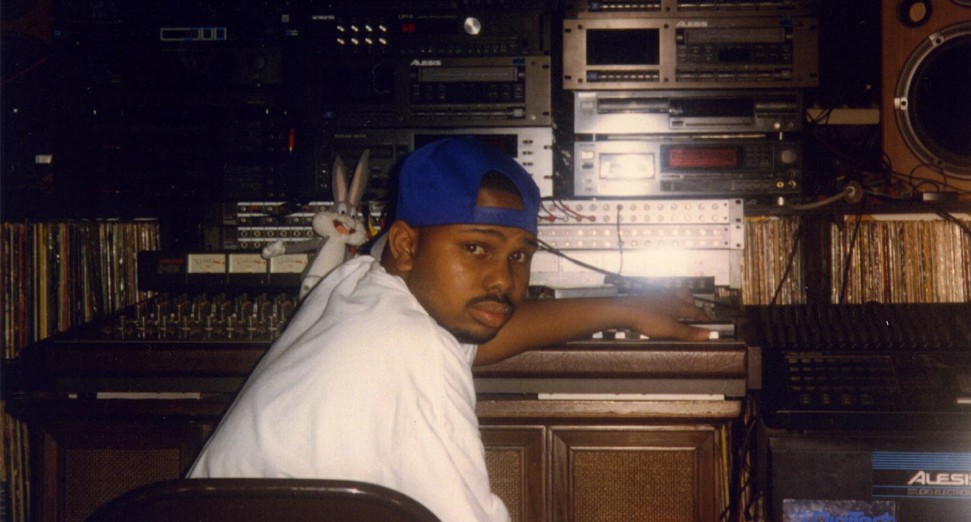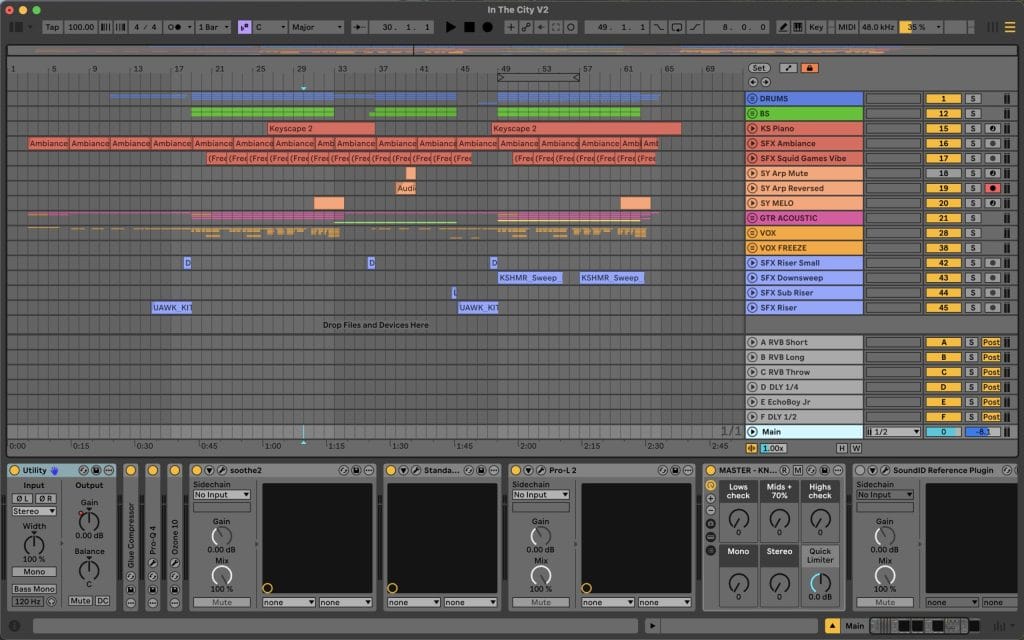
How It Was Made: Dela Utca – In The City (Soave + Chill Dance)
Dela Utca has been steadily carving out a reputation for blending electronic textures with the warmth of live instrumentation, and his latest single “In The City” captures that balance with precision. Released on Soave, the track pulls from his roots in the Dutch music scene while pushing into a more global chill dance sound. Built around expressive guitar work, it highlights his ability to make acoustic elements sit seamlessly within modern electronic production.
“In The City” comes from Jesse Hydro’s alias Dela Utca, a project that has already generated over 10 million Spotify streams since its launch in 2024 and gained viral attention on TikTok. By pairing strong topline energy with carefully engineered production choices, the track stands as one of his most personal works to date.
In this How It Was Made feature, Dela Utca breaks down the creative and technical process behind the single, from layering live guitar takes and shaping vocals with compression to adding grit with clipping tools. His approach shows how small, deliberate choices in both recording and processing can bring a track to life.
Live Guitars
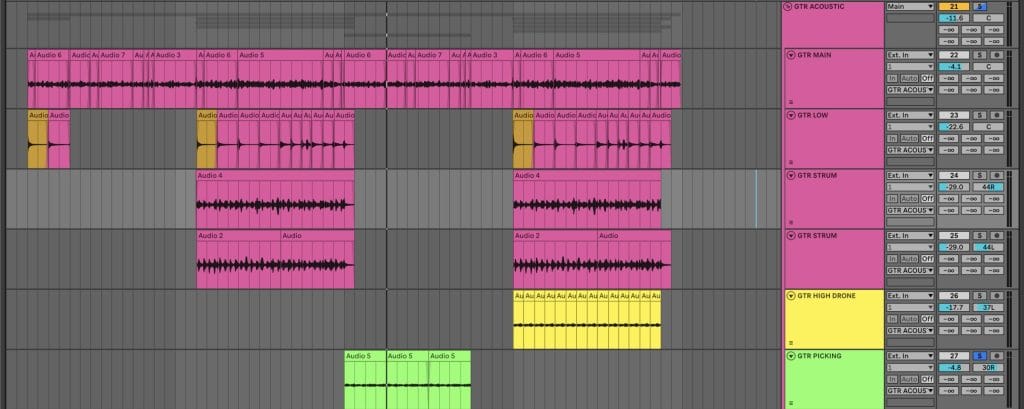
The main musical element from this song isn’t a plugin or synth but a number of acoustic guitar parts. Recording guitar live gives so much more life to a track that consists mainly out of synthesizers and ‘in-the-box’ elements such as baselines and house drums. “GTR MAIN” is the most important part and all other parts compliment the energy that I want the main guitar to have.
I recorded myself playing an Eastman guitar that I borrowed from a friend using the T-Bone SC 140 (which I highly recommend). I used only one of the microphones and created stereo width by using reverb and panning the recorded strum parts. Often I don’t hard pan (f.e. the strums are 44L and 44R) because it can feel too stereo for what I like this song to be.
A key for live guitar recording is the layering of different parts. The acoustic guitar often sounds thinner than a super saw-synthesizer for example. It also gives you the opportunity to play a high-frequency rhythmic part on top of a basic picking pattern or a 1/1 note strum. After the recording stage, it all comes down to editing all elements correctly so they feel tight (aka on-the-grid) but still remain their live character.
UAD Capitol Chambers
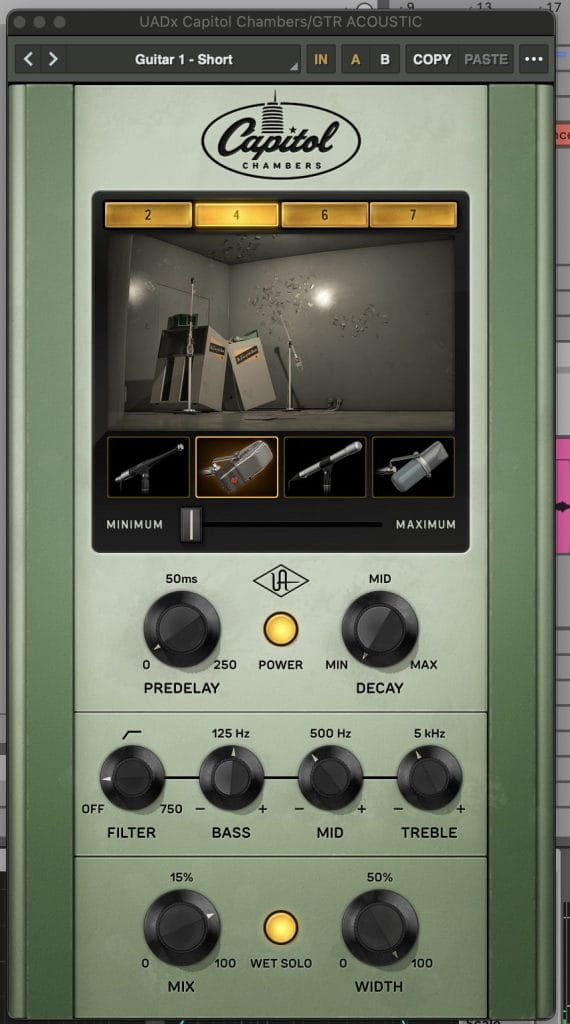
On the GTR bus I’ve added the UAD Captiol Chambers reverb. The reverb plug-in is modelled after one of the most iconic echo chambers in the world that is build years ago under the Capitol Tower in Los Angeles. It’s been used on songs from bands like Muse but also Frank Sinatra and Ray Charles.
I chose for this reverb plugin over the Valhalla Vintage Verb (my go-to reverb plugin) because it adds a very specific character. It feels indie and old school. I chose the “Guitar 1 – short” preset and changed nothing at all, except for adding an Ableton EQ to the wet signal and taking out some extra highs and lows.
I use this reverb very little and usually only I want something to sound more vintage or indie, as was the case here. I was looking for a blend between modern and vintage. It’s always good to have some plugins to help you get the production feel a certain way. And there’s no easier way for getting a vintage sound than using the same effects that they used back in the days.
Fabfilter Pro-C2
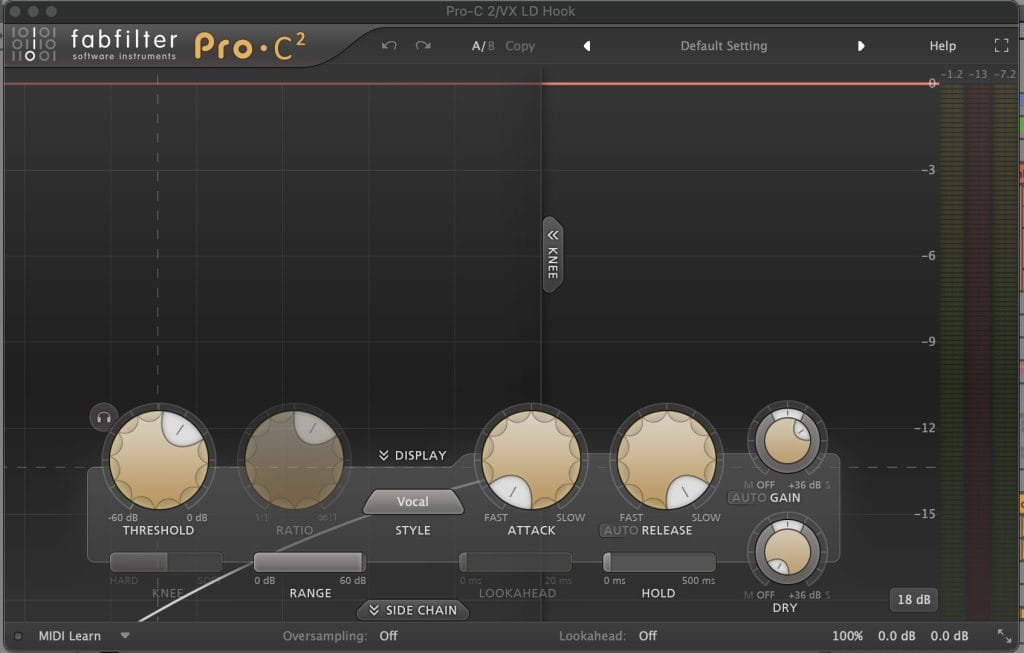
This plugin is probably not a new one for most producers. However the parameters are particularly interesting in this instance. I have used this plugin on my lead vocal and tried to emulate the well-known Waves R-Vox compressor. With the current settings it sounds nearly identical but I still get the flexibility of changing parameters and doing my own gainstaging.
To get this sound the most important thing is to set the style to ‘vocal’. Next step is getting a fast attack and slow release (as you can see on the picture). After these two steps it is up to the genre how hard you want to compress the sound. Usually I go pretty extreme with this one, reaching -12dB of gain reduction on ‘In The City’
I would highly recommend this compressor in general but also this specific preset for anyone that want to get the squashed sound from R-Vox but still keep a bit of control.
SIR Audio Tools Standard CLIP
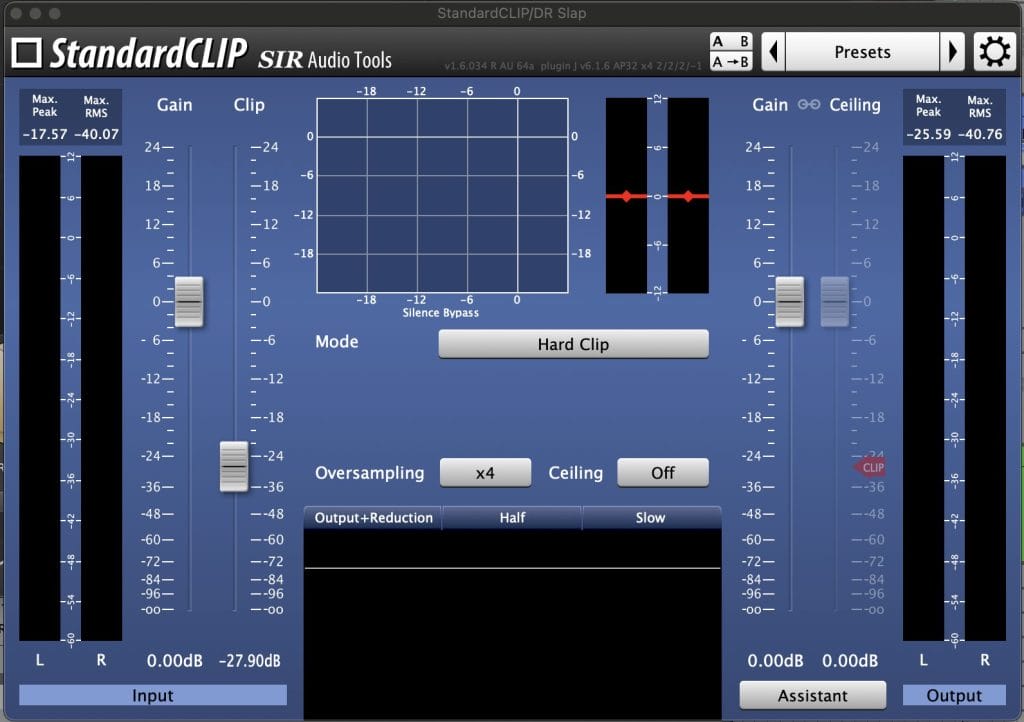
Over the years, I’ve been using more and more distortion and have also gotten more extreme with the effect. I use clipping more and more because you can tame the peaks and give the sound more grittiness at the same time. You could say I use it as a dynamic plugin as much as a sound-design plugin in this case.
When I clip, I use the StandardCLIP by SIR Audio Tools. The user-interface isn’t too fancy but it has everything that you need. In this instance, I used the clipper on my claps to cut off the peaks in the dynamics. I changed the mode to ‘Hard Clip’ and then adjust the ceiling until I hit a couple dBs of gain reduction. You can hardly hear a difference in the sound but the highest peak is close to 8dBs softer.
Be careful not to overdo it with clipping as it can mess up your mix pretty quickly. Often sticking with soft clipping also does the job. And always trust your ears with this plug-in. If it sounds good, it sounds good and if it does not, it really does not.
Quick Fire Tips For Making Chill Dance

- For me chill dance is all about finding the right blend between acoustic and electronic.
- Deep-dive into sound engineering and getting your source sound to be as good as possible.
- Study what was used back in the days, for what reason and implement it in your own productions to get a more vintage sound.
- Make it feel human, even when it’s not.



